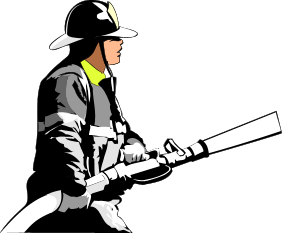Hair-Pulling Agony
When my children were young, I was an avid, and excellent, seamstress. Many of the clothes they wore were products of me and my trusty sewing machine. As much as I enjoyed sewing, I despised making alterations and repairs. I often said I would rather create an entire garment than to make alterations.
 Many novelists have similar feelings when it comes to writing a synopsis of their novel. They would rather write then entire novel than to experience the hair-pulling agony of trying to reduce the whole thing down into a few short pages; or a few short paragraphs.
Many novelists have similar feelings when it comes to writing a synopsis of their novel. They would rather write then entire novel than to experience the hair-pulling agony of trying to reduce the whole thing down into a few short pages; or a few short paragraphs.
Difficult But Necessary
I am in total agreement. It is a difficult assignment for sure. But no matter how difficult – it is necessary. So let’s dig down and see if we can find a few steps to make it a bit easier.
In bygone days, a novel synopsis was often necessary to sell the book. In fact most publishing houses would request a synopsis and a couple of chapters with which they could judge whether or not they wanted to buy your novel. (Of course, they still do, but as most of my followers know, I aim my messages toward indie authors so this is not concerning a manuscript submission to a publishing house.)
In today’s world – especially in the world of the indie author – a synopsis is needed in many online sites where you might want to feature your book. (You will even need it for your Amazon site page. So even though you may not be selling your novel to an editor, you are, in fact, selling to your reading public.
What the Synopsis is NOT

- First of all, a synopsis is not a book report. You are not telling the potential reader what the book is about from beginning to end.
- Secondly, a synopsis should not be devoid of life and emotions. It’s the emotional twists and turns that appeal to readers, and leave them wanting more.
- And third point, you cannot possibly include every subplot of the story. Don’t attempt to squeeze every little part into the synopsis. It will be like trying to drink from a fire hose – too much, too fast.
What the Synopsis IS
So if a synopsis is not a dry overview of every aspect of the novel, what is it?
Think of the synopsis as a sales tool. Think of it as writing sales copy. If someone is reading that synopsis on a social media site would it draw their attention and make them want to make a purchase? If not, why not?
A Few Pointers
 Spend quality time on this project. Don’t try to hurry. Invest in writing several drafts. Let them cool for a couple of days, then return and edit. And edit again. Be as thorough about the synopsis as you are about the novel itself.
Spend quality time on this project. Don’t try to hurry. Invest in writing several drafts. Let them cool for a couple of days, then return and edit. And edit again. Be as thorough about the synopsis as you are about the novel itself.
- Write your synopsis in third person, present tense, regardless of whose point of view or which tense is actually used in the novel. (This is much like the technique used by screen writers when they create a screenplay treatment.) Present tense gives the text an immediacy that works to draw the reader into the copy and holds their attention.
- When writing a synopsis to sell your book to an editor, you would include the novel’s ending and the plot resolution. Do not include the ending when writing a synopsis for public relations and selling purposes. It’s not your goal to give everything away. Your goal is to entice this reader to want to read the entire book – to want to find out what happens.
- Introduce at least two of your main characters by name and hint at the conflict in the story. What does your main character what? What is the challenge being faced? What obstacles loom in the way? Also be sure to hint at the emotions involved: loneliness, anger, desperation, lost love, need for control, and so on.
- Sometimes it works to begin the synopsis with the opening sentences of your actual text copy. If those sentences work as a hook for your novel, they may work as a hook for your synopsis. Try it and see.
- Browse through sites such as GoodReads; read several synopses that are in the same genre in which you are writing. Studying others will help you hone your skills in this area.
As with anything else in novel writing, creating the synopsis of your story will require practice, practice, and more practice.
Never take this aspect of the indie author process lightly. This is serious business. You didn’t write that novel to have it languish simply because you failed to prepare to present it effectively to your potential audience.
In the next post you’ll learn how to write compelling back cover copy — or book blurbs. 
Coming Soon
The first two titles in the Norma Jean Lutz Classic Collection will be available in print form.
Flower in the Hills and Tiger Beetle at Kendallwood will soon be in bound copies.
Watch for upcoming announcements.


![]()


